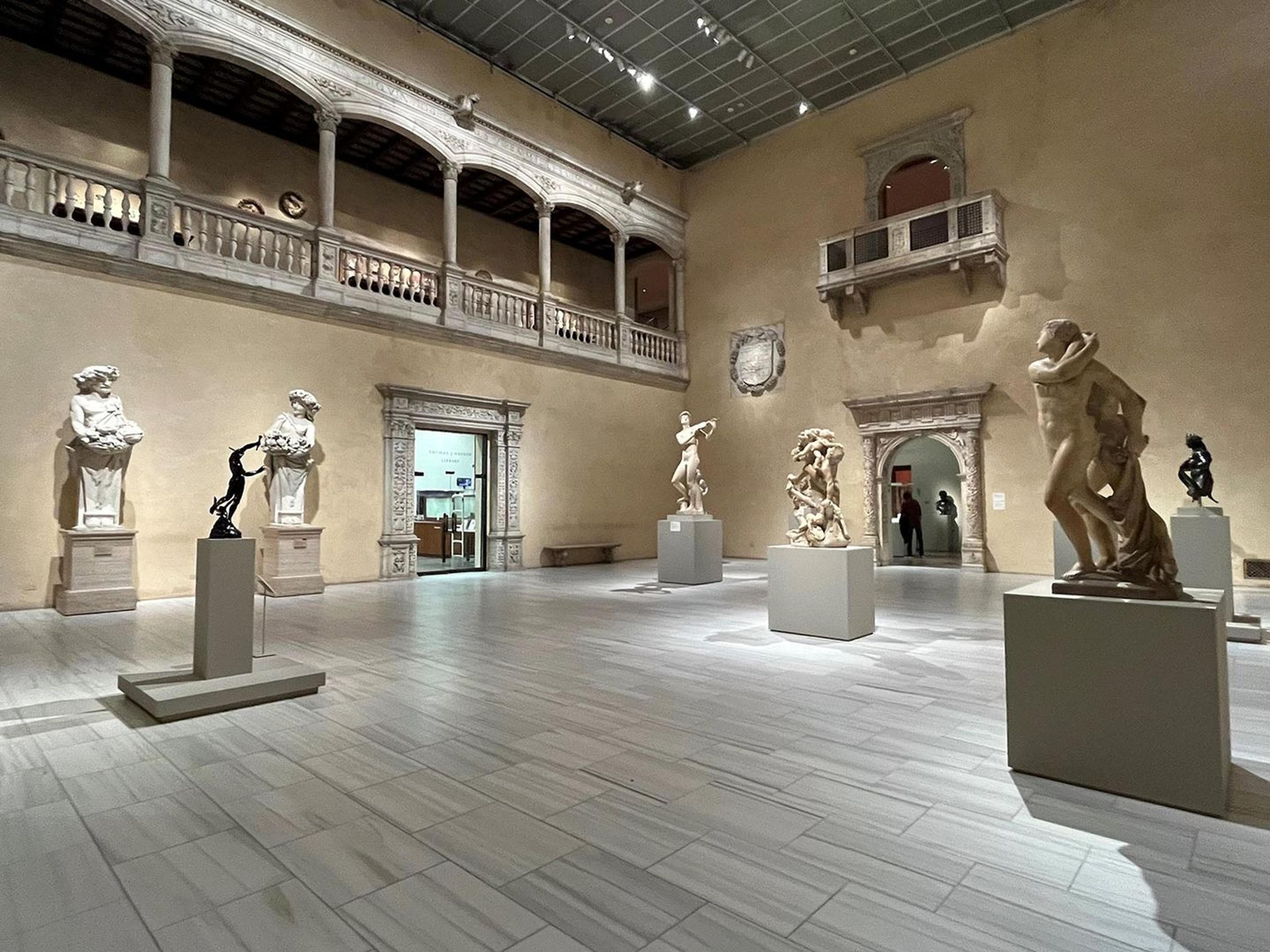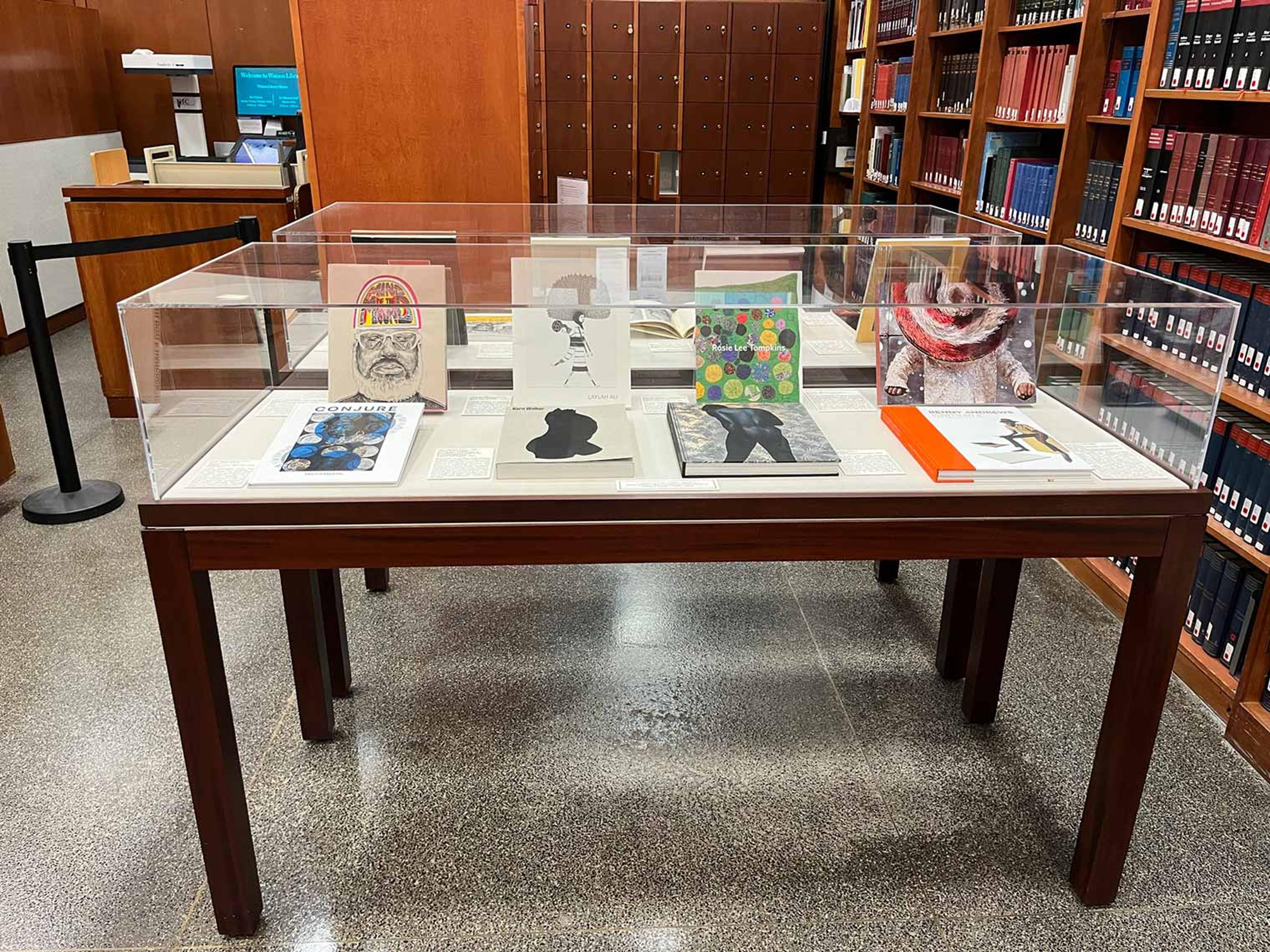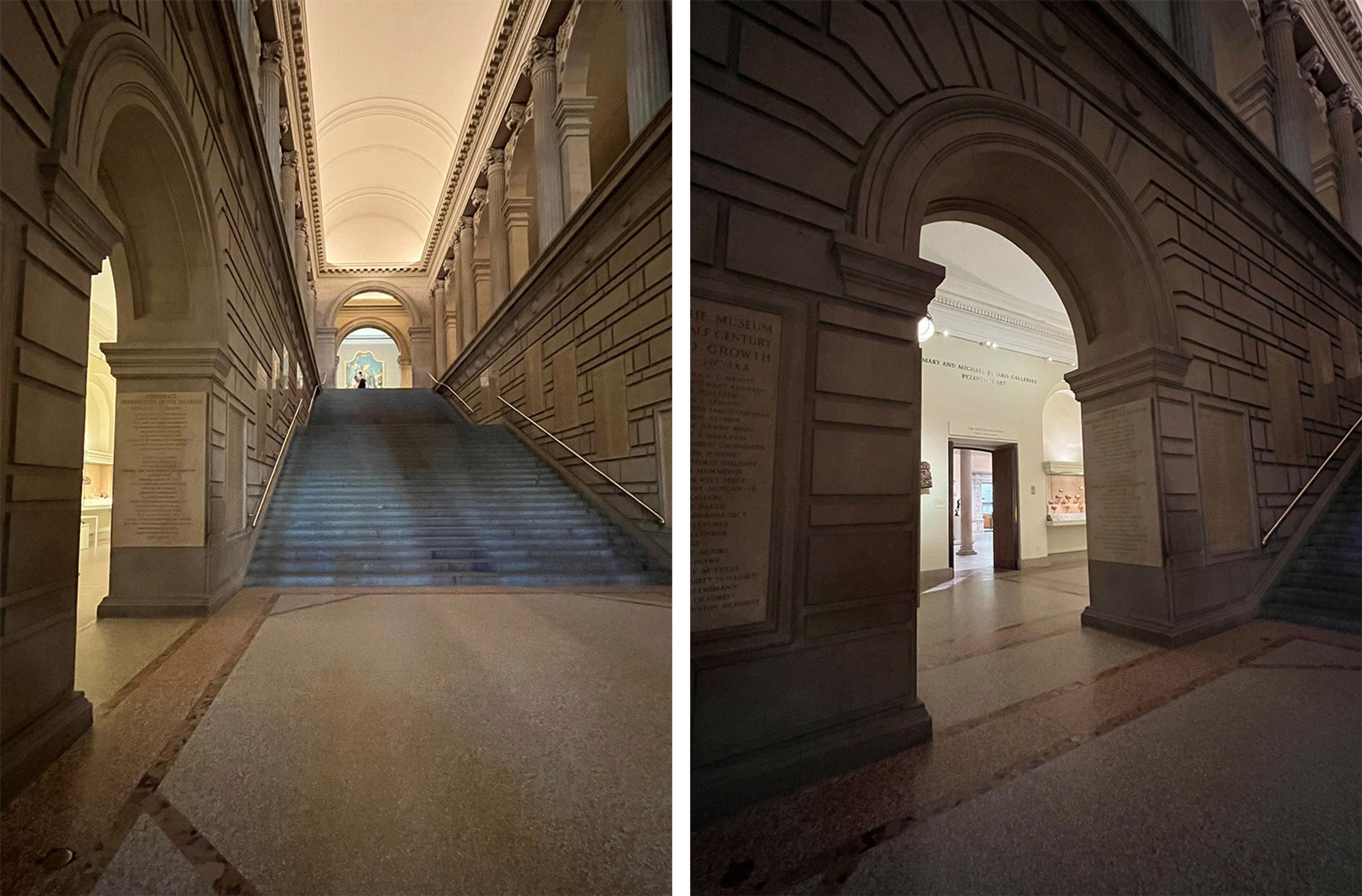When you think of museums, what’s the first thing that comes to mind? I confess, for myself, it never used to be libraries.
As a new intern at The Met’s Watson Library, my perceptions of museums were based upon memories of childhood school trips and my own ventures through European cities with cultural institutions on my bucket list. Museums were places to explore, places that educated and inspired creativity. They were engaging visual experiences, though ultimately designed to display only a limited amount of information to visitors. By comparison, I saw libraries as interactive, research-oriented, and relaxed spaces. I didn’t realize it at the time, but there were archetypes in my head depicting the Library in Your Hometown and the Museum You Must Travel to See. These were unnecessary dichotomies: exciting and safe, passive and active, right brain and left brain.

The entrance to Watson Library shown within the patio of the Castle of Veléz Blanco. All photos by author
Graduate studies in library science and museum work (sans libraries) left me with an even greater impression that the two fields of study were similar, but completely disparate from the patron perspective. Over the course of my internship, however, I’ve found that Watson Library contradicts these distinctions. Through Watson Library, Met visitors and staff can take action in their understanding of exhibitions. They can perform art research on topics beyond the scope of the Museum's collection, and they can use library materials as guides for their own projects. With a library, the museum does not need to be a passive experience.
Likewise, the library offers more than the benefits of its reading materials. Before you even enter the space, Watson frames itself as a place of art.
Situated to the left of The Met’s iconic Grand Staircase, visitors enter through two massive wooden doors into a patio from the early Renaissance. The chamber is filled with statues casting long shadows onto the floor. A white-pillared balcony can be viewed overhead and the doors to the library are framed by an archway complete with detailed carvings. You cannot help but feel as if you’ve fallen back to another time.
Watson is probably one of my favorite spots in the Museum. This, coupled with the various book display cases set up throughout Watson’s reading space marks a specific intent in the library’s design: to act as a fully integrated part of the Museum for researchers to explore as much as they partake in its content.

Vitrine display case in Watson Library
In many ways, the library’s placement and design encapsulate its role at The Met. Central yet hidden, it takes about a minute to walk from the entrance in the Great Hall to the doors of Watson. And yet, most people still walk right by it.

Right: Great Staircase; Left: Archway that leads to Watson Library
Over the past few weeks, I’ve had countless conversations containing the same phrase: "You know, I’d never realized The Met even had a library.” Each time, there would be an agreement that it made sense—that of course the Museum had a library. After all, as one fellow intern pointed out to me, how else would exhibition research get done?
I think this idea is very telling. Despite the perceptions many of us cultivate about museums and libraries, the presence of Watson still makes an intuitive level of sense: the library is not only physically central to the space, it’s also at the heart of the ideals with which the Museum was built.
Just take a look at page two of the Museums’s founding charter from 1869:
“...to be located in the City of New York, for the purpose of establishing and maintaining in said city a Museum and library of art…to collect, preserve, study, exhibit, and stimulate appreciation for and advance knowledge of works of art that collectively represent the broadest spectrum of human achievement at the highest level of quality, all in the service of the public and in accordance with the highest professional standards.”
— Trustees of The Metropolitan Museum of Art
The library embodies these goals. Its materials offer information for study and concepts for inspiration; special collections and artist books are conserved with the same fervor as any ancient painting; and for visitors, the library adds an interactive element to the Museum.

Folios in the stacks of Watson Library
Exploration, inspiration, and study—ideas I once thought were meant to be divided between museums and libraries—are combined into one within Watson Library. The way I once shoe-horned museums and libraries into their own little boxes in my head is strange to think about now. Sometimes, I wonder how I’ll consider the next museum I visit. Maybe I’ll look for its library, checking to see if the complex, interwoven relationship I’ve found between The Met and Watson can be seen elsewhere.
Whether I find it or not, though, there’s something unique about this library and this Museum. Maybe it’s the deliberate placement of the library within the Museum or the open and inclusive way in which library staff welcomes Museum visitors, but I’ve found that Watson takes ideas that should have been clear from the start—the way that art can be studied and books can be art—and makes them impossible to ignore.
Watson Library wasn’t something I knew about before joining its team at The Met, but it’s a part of the Museum I will never forget.
